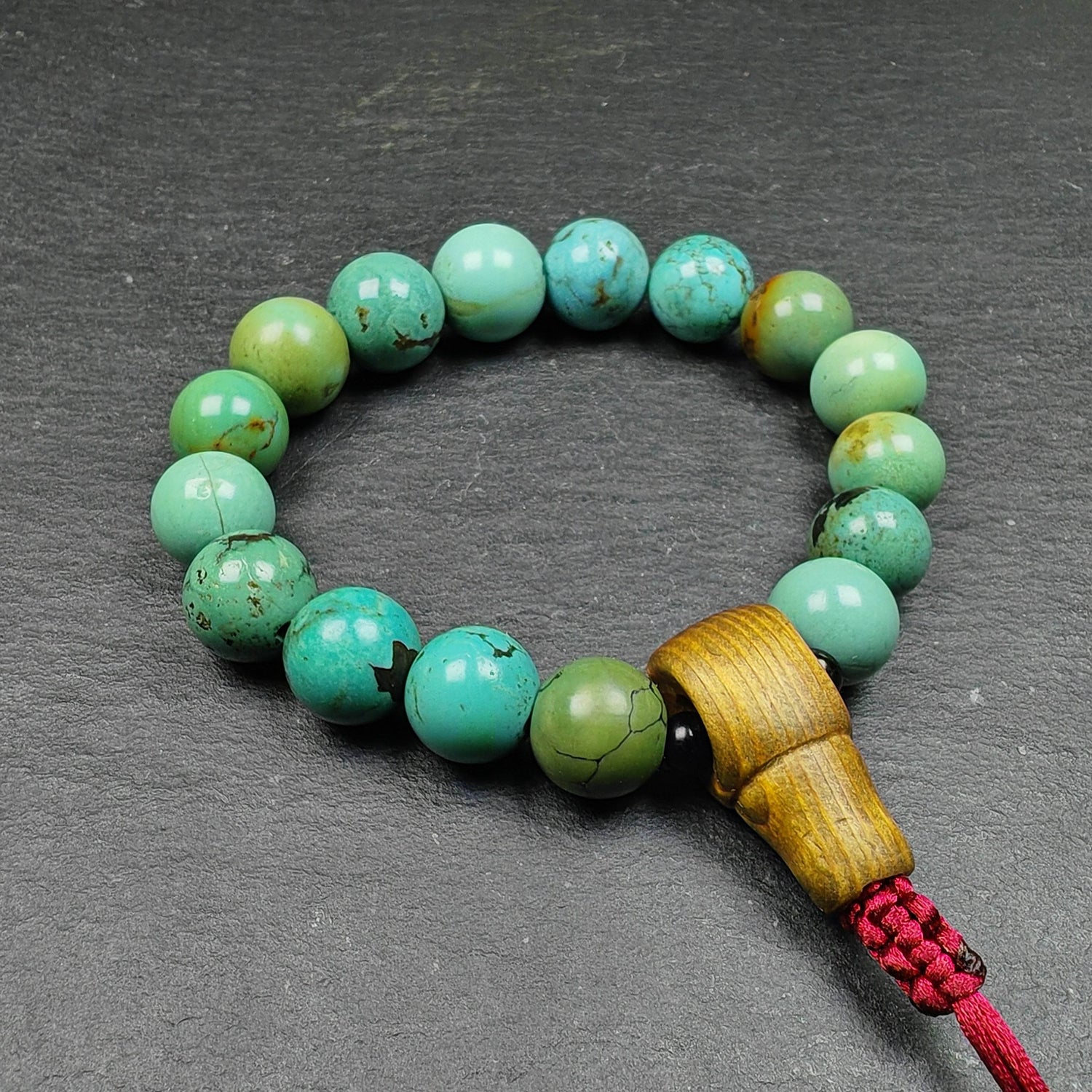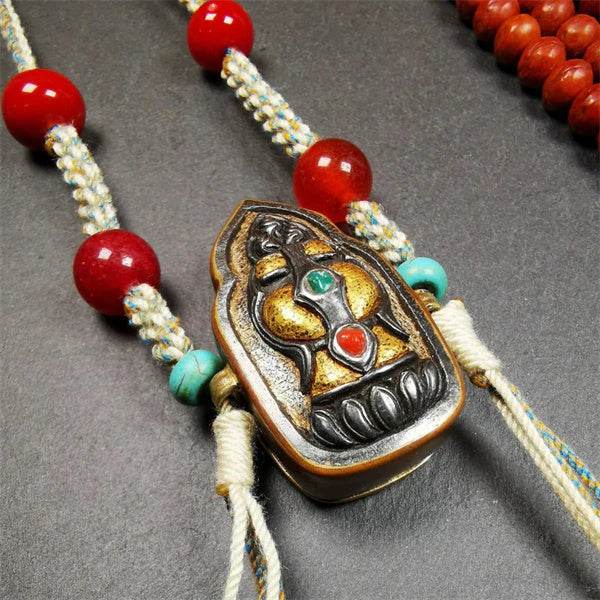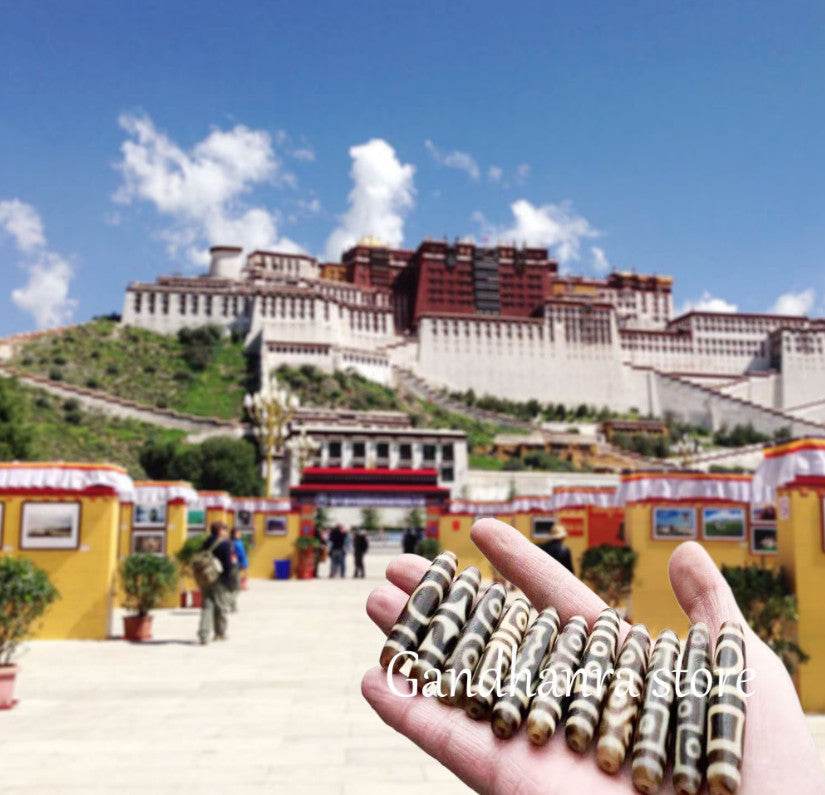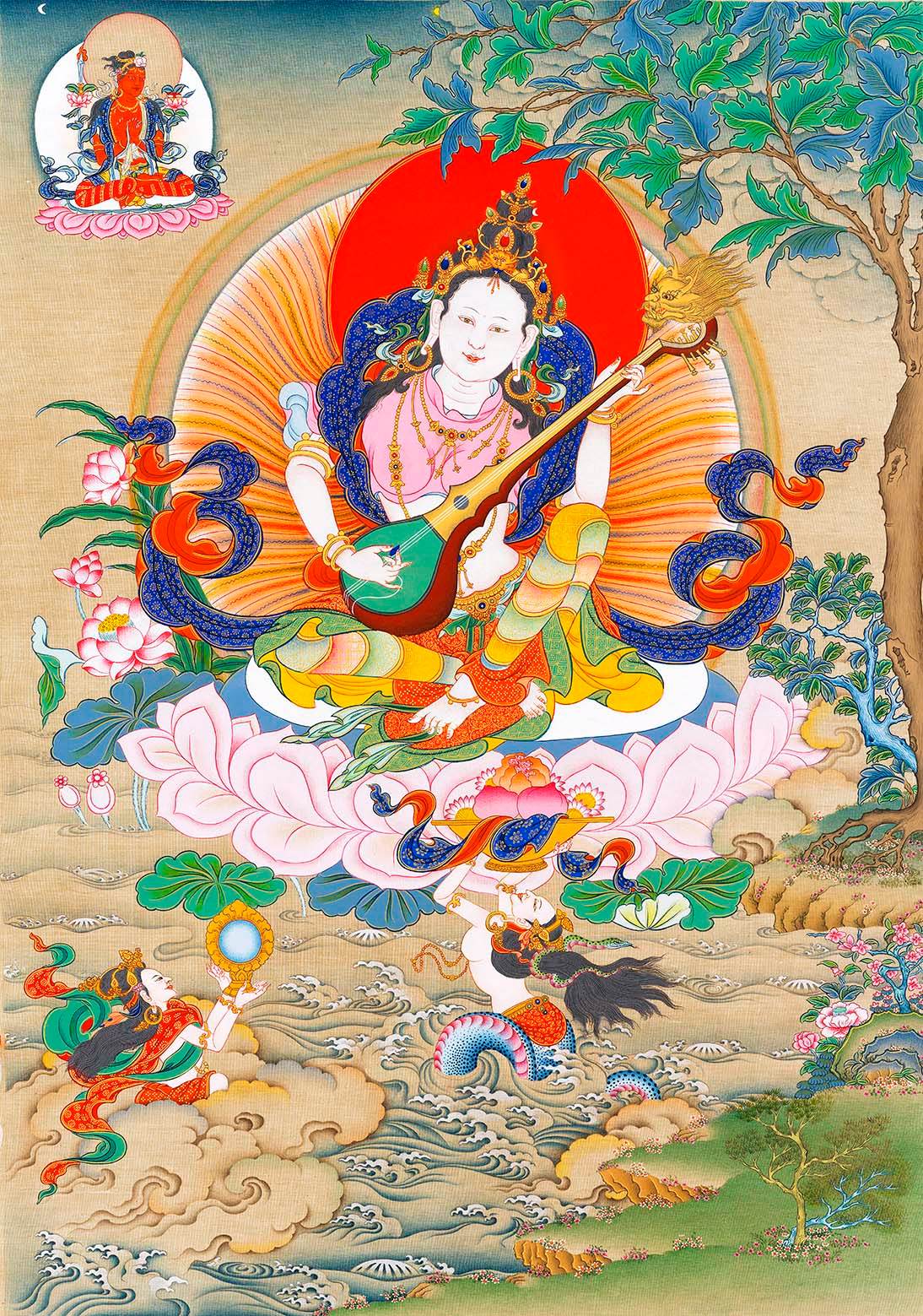
The prayer wheel in Himalayan art ▎Do not hesitate to turn it

"Eight Auspicious Symbols Decorated Lantsa Script Pedestal Prayer Wheel"
Mid-18th century, Private Collection

*"Five Dhyani Buddhas Decorated Lantsa Script Handheld Prayer Wheel"*
Partial ivory material, early 19th century, Private Collection
The prayer wheel is often inscribed with mantras in Lantsa script,
a writing system originating no earlier than the 11th century.
It flourished in Buddhist communities of the Kathmandu Valley,
notable for its strong decorative and symbolic qualities.
When I first saw it turning,
Only boredom and irritation filled my heart.
As time passed, spin after spin,
I began to chant the six-syllable mantra.
Then, the image of Avalokiteshvara grew clearer and clearer,
And a light radiated from within my heart.
— Philip Denwood (1941– )
British Tibetologist, Distinguished Communitarian

"The Central Axis and Prayer Scroll Inside a Prayer Wheel"
12th–13th century, Private Collection
When you circumambulate stupas and temples while holding a prayer wheel, the ancient syllables chanted from your lips form a palace brimming with mantras. Abiding in this profound state, your body, speech, and mind compel you to focus. A single action repeated hundreds, thousands, even millions of times; a single mantra recited until it becomes countless—this practice, known as "plural practice," was initially taught by the Buddha to the lazy nāgas (a narrative seemingly intrinsic to Buddhism).
Numerous texts on Buddhist philosophical systems are studied by the wise, while ordinary beings, trapped in the three poisons, rarely have the chance to engage with these profound teachings systematically. Thus, is there a way to condense or simplify these texts? People yearn for a sense of participation in practice—a reasonable method to awaken and cultivate inner experience.
Today, this aspiration has been simplified into the accumulation of merit: eliminating karmic obstacles to avoid rebirth in lower realms while protecting and blessing all sentient beings. At the heart of mantra practice is the cultivation of deep reverence for the wisdom of speech, the belief that one’s devotion to the deity can manifest a visualized object. When the deity, whose body is composed of mantras, appears in the mind, one no longer needs to read voluminous scriptures to perceive the essence of wisdom. The Sakya scholar Gorampa Sönam Senggé (1429–1489) also praised mantra practice as "the supreme method bestowed by the Buddha out of compassion." Even the "laziness" of sentient beings must be met with gentleness.

"Handheld Prayer Wheel", mid-to-late 19th century
National Museum of Asian Art collection

"Wind-Powered Prayer Wheel", early 20th century
The Newark Museum of Art collection

"Ivory Handheld Prayer Wheel"
Early 20th century, Nelson-Atkins Museum of Art
It is difficult to pinpoint the exact origin of the prayer wheel (མ་ཎི་འཁོར་ལོ་ / སྔགས་འཁོར་མ་). Generally, academic circles propose three models for tracing its history.
The first views the prayer wheel as a product of integrating daily labor practices in Tibet with individual spiritual cultivation—a collective innovation born from making religious practice part of everyday life. Some scholars who initially held this view further consider prayer wheels in the broader sense as a fusion of indigenous Tibetan religion and Buddhist mantra veneration, much like the Tibetan proverb, *"Circling mountains, circling lakes, circling mantras"* (རི་སྐོར་མཚོ་སྐོར་མ་ཎི་སྐོར་). Although texts like *The Maṇi Kambum* mention objects resembling prayer wheels, their early function differed slightly from later iterations: early prayer wheels were more symbolic (heavily decorated) than practical tools for spiritual practice.
The final model traces the Tibetan prayer wheel’s form to the octagonal revolving bookcases used in East Asian Buddhism, where monks equated rotating the case with reading the entire canon. This may not have been mere monastic convenience but rather an effort to distinguish between the genuine insight gained from reading texts and the merit generated by the act itself. Some scholars even argue that it originated as an early monastic practice emulating the Buddha’s *"First Turning of the Wheel of Dharma,"* with later handheld prayer wheels (ལག་འཁོར་) emerging as lay imitations of this monastic ritual. Notably, large-scale prayer wheels likely appeared no earlier than the 17th century.

"Four-Armed Avalokiteshvara", 12th century
Ford Family Collection
The mantra of Avalokiteshvara occupies the core of mantra veneration in Tibet.
Most prayer wheels contain scrolls inscribed with the Avalokiteshvara mantra:
ॐ मणि पद्मे हूँ — ཨོཾ་མ་ཎི་པདྨེ་ཧཱུྃ། (Om Mani Padme Hum)

"Gem-Encrusted Handheld Prayer Wheel"
Late 17th century, The Walters Art Museum

"Handheld Prayer Wheel", early 20th century
Southern Alleghenies Museum of Art collection







3 comments
3l4odl
3l4odl
m87vlt